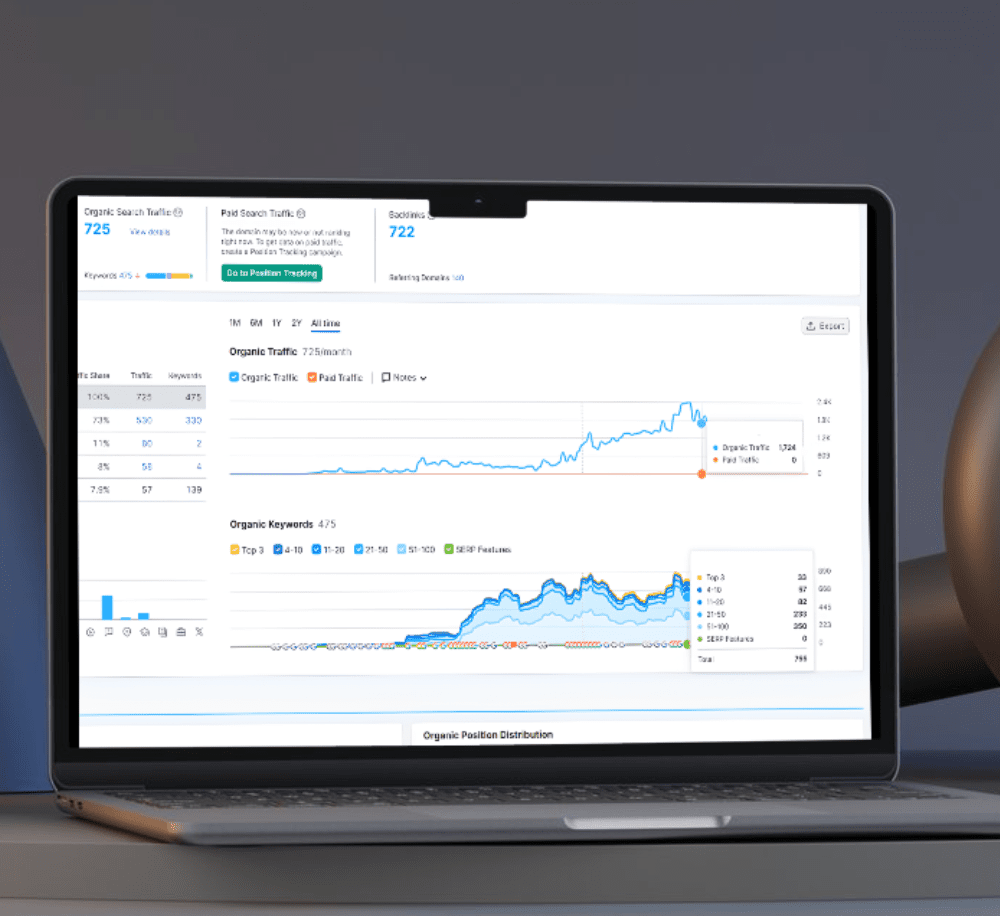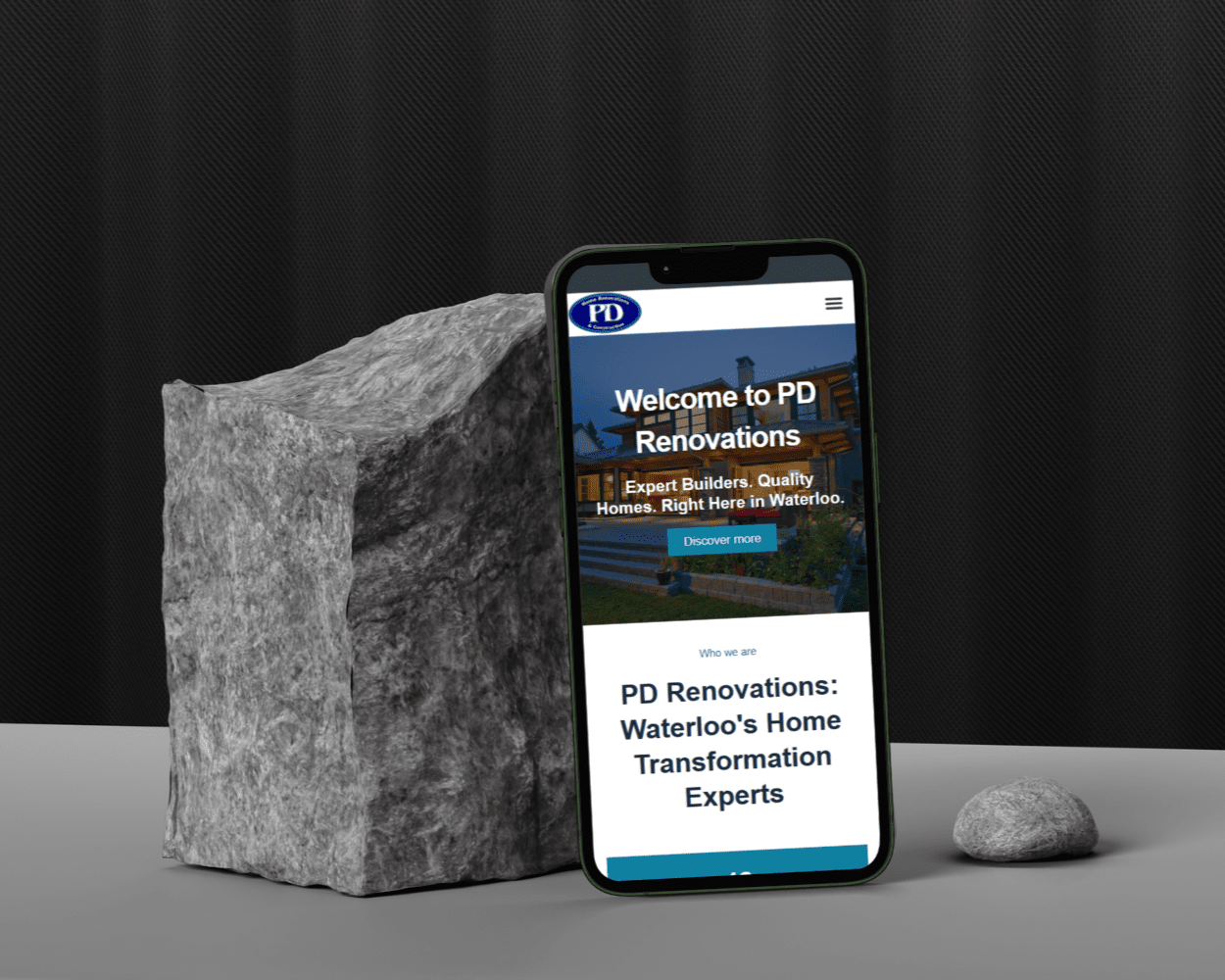In today’s digital age, the significance of a professional website for a construction company cannot be overstated. A well-crafted construction website design serves as a cornerstone for establishing credibility and trust with potential clients. It acts as a virtual storefront, offering an invaluable first impression that can significantly impact a visitor’s perception of your business. A thoughtfully designed website not only attracts potential clients but also differentiates your company from a myriad of competitors in the construction industry.
One of the primary benefits of a professional website is its ability to showcase past projects, thereby demonstrating expertise and experience in the field. This project showcase can be pivotal in convincing prospective clients of your capabilities. Furthermore, an effectively designed website enhances user experience by ensuring intuitive website navigation, which allows visitors to easily find the information they seek. This ease of access is crucial for retaining visitor interest and encouraging them to engage further with your company.
A professional website also plays a vital role in the marketing strategy of a construction company. It serves as a platform to highlight unique selling points, share client testimonials, and provide detailed descriptions of services offered. By integrating these elements seamlessly, a website can significantly boost the company’s online presence and visibility, making it easier for potential clients to discover and choose your services over others.
This blog post will delve into essential design tips for creating an effective construction company website. Key topics will include optimizing website navigation to enhance user experience, effectively showcasing projects to build credibility, and other crucial elements that contribute to a professional and impactful online presence. By following these guidelines, construction companies can create a website that not only attracts and retains clients but also stands out in a competitive market.
Understanding Your Audience and Their Needs
Understanding your audience is a fundamental step in the process of designing a professional website for a construction company. Knowing who your potential clients and stakeholders are, and what they expect from your website, can greatly influence the overall design and functionality. This understanding begins with thorough research and analysis to identify the specific needs and preferences of your audience.
One effective way to achieve this is by creating user personas. User personas are fictional characters that represent the different types of users who might visit your construction company’s website. These personas are created based on data gathered from market research and real customer insights. They typically include demographic information, job roles, goals, challenges, and behaviors. By developing detailed user personas, you can tailor your website design to meet the specific needs and expectations of your target audience.
For instance, a project manager looking for a reliable construction partner might prioritize detailed project showcases and testimonials. On the other hand, a homeowner seeking renovation services may be more interested in an intuitive website navigation and easy access to contact information. Understanding these different needs can guide the design of your website, ensuring it provides a user experience that resonates with all types of visitors.
Moreover, understanding your audience can help you create content that is both relevant and engaging. This could include blog posts, case studies, or interactive features that address common questions or challenges faced by your audience. By aligning your content strategy with the needs of your users, you can enhance their experience and establish your website as a valuable resource.
In summary, a deep understanding of your audience’s needs and preferences is crucial for creating a user-friendly and effective construction website design. By employing user personas and tailoring your design and content accordingly, you can ensure that your professional website meets the expectations of your clients and stakeholders, ultimately contributing to the success of your business.
Creating a User-Friendly Interface
Designing a user-friendly interface is paramount to the success of any construction company website. A well-crafted UI ensures that visitors can effortlessly navigate the site, find relevant information, and ultimately engage with the company’s services. One of the core principles of effective UI design is simplicity. By removing unnecessary elements and focusing on clear, straightforward content, users are less likely to become overwhelmed or frustrated. This approach not only enhances user experience but also keeps the website looking professional and tidy.
Consistency plays a crucial role in user interface design. Maintaining uniformity in fonts, colors, and button styles across all pages helps create a cohesive and professional website. This consistency extends to the navigation menu, which should be intuitive and easy to use. Logical grouping of menu items and clearly labeled sections will guide users seamlessly through the website. Ensuring that the most important information, such as services offered and project showcases, are easily accessible can significantly improve the overall user experience.
Intuitive navigation is a cornerstone of a user-friendly interface. Effective navigation design involves placing menus in familiar locations, such as at the top or side of the page, and using descriptive labels that clearly indicate where each link will take the user. Dropdown menus and breadcrumb trails can further enhance navigation by providing additional context and helping users understand their current location within the website.
Responsive design is another critical aspect to consider. With the increasing use of mobile devices, it is essential that a construction company’s website is accessible and functional across various screen sizes and devices. A responsive design adjusts the layout and content based on the user’s device, ensuring a seamless experience whether they are using a smartphone, tablet, or desktop computer. This adaptability not only improves user satisfaction but also broadens the website’s reach.
In summary, a user-friendly interface, characterized by simplicity, consistency, intuitive navigation, and responsive design, is essential for creating a professional and effective construction company website. By focusing on these principles, businesses can enhance user experience and ensure that their website serves as a powerful tool for attracting and retaining clients.
Enhancing User Experience (UX)
When it comes to construction website design, enhancing user experience (UX) is paramount. A professional website must prioritize user engagement and satisfaction through various strategies that cater to seamless navigation and interactive elements. One crucial aspect of UX design is load time optimization. Slow load times can deter visitors, reducing the chances of them exploring the site. Implementing techniques such as image compression, server optimization, and leveraging browser caching can significantly improve load times, offering a smoother experience for users.
Interactive elements play a pivotal role in engaging visitors. Features such as interactive project showcases, virtual tours, and client testimonials provide a dynamic and immersive experience. These elements not only highlight the construction company’s expertise but also build trust and credibility. For instance, an interactive project showcase allows potential clients to view past projects in detail, offering a visual representation of the company’s capabilities.
Clear calls to action (CTAs) are essential in guiding visitors through the website and encouraging them to take desired actions. CTAs should be strategically placed and clearly visible, prompting users to request a quote, contact the company, or explore services. Using action-oriented language and contrasting colors can make CTAs stand out, ensuring they capture the visitor’s attention.
Furthermore, a well-structured website navigation system enhances the overall user experience. Intuitive navigation menus, breadcrumb trails, and search functionalities help users find information quickly and easily. A professional website should be organized logically, with clearly labeled sections and categories that reflect the services and expertise of the construction company.
Ultimately, a construction company website that prioritizes user experience will not only retain visitors but also convert them into potential clients. By focusing on load time optimization, interactive elements, clear calls to action, and effective navigation, a construction website can provide a seamless and engaging experience that encourages users to explore further and engage with the company’s services.
Showcasing Your Projects Effectively
One of the most critical aspects of a construction website design is the effective showcasing of completed and ongoing projects. High-quality images and videos play a pivotal role in this endeavor, offering potential clients a visual insight into the scope and quality of your work. Investing in professional photography and videography is essential, as these elements can significantly enhance the user experience by providing a clear and engaging representation of your projects.
Detailed project descriptions are equally important. Each project should be accompanied by a comprehensive narrative that outlines the project’s goals, challenges, and outcomes. This not only adds context but also demonstrates your company’s capability to handle diverse and complex projects. Including specific details such as project timelines, materials used, and innovative solutions implemented can further underscore your expertise and professionalism.
Client testimonials are another powerful tool for building credibility. Featuring quotes from satisfied clients alongside your projects can provide social proof and reinforce the quality of your work. These testimonials should be genuine and specific, highlighting particular aspects of your service that clients appreciated. Where possible, include the client’s name and company to add authenticity.
Organizing your project portfolio in an intuitive manner is crucial for optimal website navigation. Categorize projects by type, such as residential, commercial, or industrial, and ensure that your website’s layout allows users to easily filter and find relevant projects. This not only improves the user experience but also helps potential clients quickly locate examples of work similar to what they require.
Creating case studies for significant projects can further enhance your professional website. A well-crafted case study should include an overview of the project, objectives, challenges faced, the solutions your team implemented, and the final results. Including metrics and measurable outcomes can add substantial value, demonstrating the tangible impact of your work. These case studies can serve as compelling evidence of your company’s successful track record and expertise in the construction industry.
Search engine optimization (SEO) is crucial for a construction website design, as it ensures that your website is visible to potential clients searching for construction services online. Effective SEO begins with thorough keyword research. Identify the terms and phrases potential clients use when searching for construction companies. Tools like Google’s Keyword Planner can help you uncover valuable keywords such as “construction website design,” “professional website,” and “project showcase.”
Once you have identified your target keywords, the next step is to implement on-page SEO techniques. This involves optimizing various elements of your web pages, including titles, headings, meta descriptions, and image alt texts. Ensure that your keywords are naturally integrated into these elements to improve the relevance of your content without engaging in keyword stuffing. For instance, in a section showcasing your completed projects, use terms like “project showcase” to enhance both user experience and search engine visibility.
Creating high-quality, relevant content is another critical aspect of SEO. Your website should feature informative and engaging content that addresses the needs and interests of your target audience. This could include detailed project descriptions, client testimonials, and blog posts on construction trends and best practices. High-quality content not only attracts visitors but also encourages them to spend more time on your site, which can positively impact your search engine rankings.
Local SEO is especially important for construction companies aiming to attract clients in specific geographic areas. Optimize your website for local search results by including your business name, address, and phone number on every page, and ensure that these details are consistent across all online platforms. Additionally, create and verify a Google My Business listing to enhance your local search presence. Local SEO strategies can significantly improve your website’s visibility to potential clients in your service area, driving more targeted traffic to your site.
Incorporating Trust-Building Elements
Building trust is paramount for any construction company aiming to convert website visitors into loyal clients. One of the most effective ways to establish credibility is by prominently displaying certifications, awards, and affiliations. These elements serve as external validations of your company’s expertise and reliability, giving potential clients confidence in your services. A well-designed construction website should have a dedicated section or footer space to showcase these credentials, ensuring they are visible without overwhelming the user experience.
Client testimonials, reviews, and case studies are equally indispensable in building trust. Featuring authentic feedback from satisfied clients can significantly influence a visitor’s perception of your company’s reliability. Incorporating a mix of text and video testimonials can add a dynamic element to your website, making it more engaging. Case studies, on the other hand, offer a detailed account of your project’s journey, highlighting challenges faced and solutions implemented. These stories not only showcase your technical skills but also demonstrate your problem-solving capabilities and professionalism.
Clear and accessible contact information is another critical component. Make sure your phone number, email address, and physical location are easy to find. An intuitive contact form can further facilitate communication, allowing potential clients to reach out effortlessly. This small yet significant feature can make a substantial difference in user experience and website navigation, ensuring visitors have a seamless interaction with your site.
The ‘About Us’ page is an excellent opportunity to tell your company’s story. Sharing the journey, mission, vision, and values of your construction company humanizes your brand, making it more relatable. Highlighting key team members and their qualifications can add an extra layer of trust, demonstrating the expertise behind your services. A well-crafted ‘About Us’ page can significantly enhance the overall user experience, making your construction website not just a digital portfolio but a virtual handshake.
Maintaining and Updating Your Website
Regular maintenance and updates are crucial for ensuring that your construction website design remains professional and effective. A well-maintained website not only enhances user experience but also helps in building trust with your audience. One of the essential practices in website maintenance is updating content regularly. Fresh, relevant content keeps visitors engaged and encourages them to return to your site. Consider incorporating a blog or news section where you can share industry updates, company news, and project highlights.
Another critical aspect of website maintenance is checking for broken links. Broken links can frustrate users and negatively impact your site’s search engine ranking. Regularly use tools to scan your website for broken links and fix them promptly to ensure smooth navigation for your visitors. Additionally, maintaining robust security measures is vital to protect your website from cyber threats. Ensure that your website platform, themes, and plugins are up-to-date, and consider implementing security plugins or services to safeguard your data.
To keep your website fresh and relevant, showcase new projects and achievements prominently. Updating your project showcase section with recent projects not only demonstrates your company’s ongoing activity but also serves as a portfolio for potential clients. Highlighting completed projects with high-quality images and detailed descriptions can significantly enhance your professional website’s appeal.
Incorporating user feedback is another effective way to maintain and improve your website. Pay attention to user behavior and feedback to identify areas that may need improvement. This can involve simplifying website navigation, enhancing mobile responsiveness, or adding new features that enhance user experience. Regularly reviewing and optimizing your website ensures that it remains in line with user expectations and industry standards.
Ultimately, a well-maintained and updated construction company website serves as a powerful marketing tool, showcasing your professionalism and commitment to quality. By following these best practices, you can ensure that your website remains an effective platform for attracting and retaining clients.




